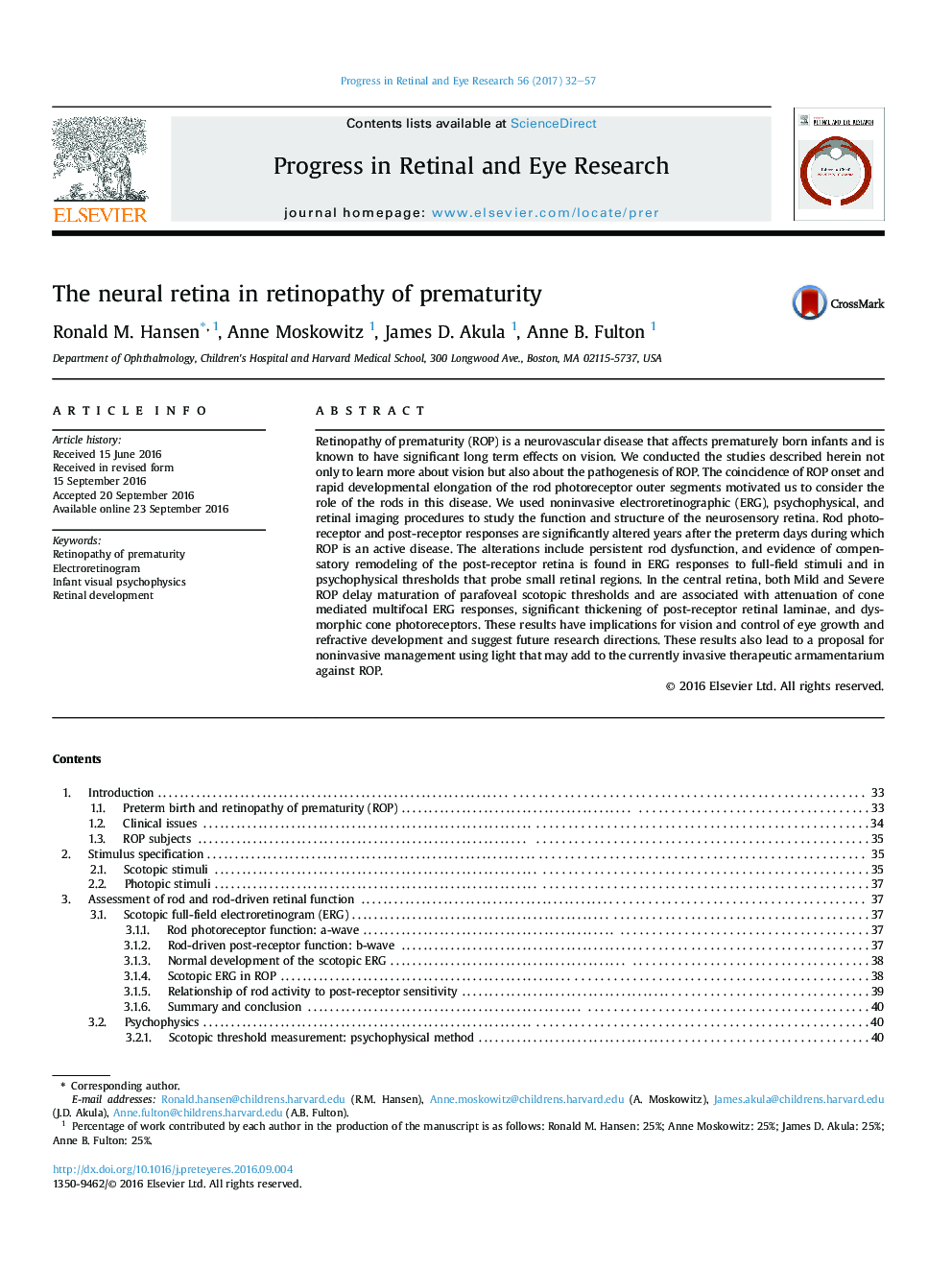| Article ID | Journal | Published Year | Pages | File Type |
|---|---|---|---|---|
| 5705708 | Progress in Retinal and Eye Research | 2017 | 26 Pages |
â¢Retinopathy of prematurity (ROP) involves the neurosensory retina.â¢The status of the immature rods may be a driver of ROP pathogenesis.â¢Evidence of photoreceptor injury persists years after ROP is an active disease.â¢Post-receptor retina reorganizes to compensate for deficient photoreceptor inputs.â¢The late maturing central retinal is especially vulnerable to the effects of ROP.
Retinopathy of prematurity (ROP) is a neurovascular disease that affects prematurely born infants and is known to have significant long term effects on vision. We conducted the studies described herein not only to learn more about vision but also about the pathogenesis of ROP. The coincidence of ROP onset and rapid developmental elongation of the rod photoreceptor outer segments motivated us to consider the role of the rods in this disease. We used noninvasive electroretinographic (ERG), psychophysical, and retinal imaging procedures to study the function and structure of the neurosensory retina. Rod photoreceptor and post-receptor responses are significantly altered years after the preterm days during which ROP is an active disease. The alterations include persistent rod dysfunction, and evidence of compensatory remodeling of the post-receptor retina is found in ERG responses to full-field stimuli and in psychophysical thresholds that probe small retinal regions. In the central retina, both Mild and Severe ROP delay maturation of parafoveal scotopic thresholds and are associated with attenuation of cone mediated multifocal ERG responses, significant thickening of post-receptor retinal laminae, and dysmorphic cone photoreceptors. These results have implications for vision and control of eye growth and refractive development and suggest future research directions. These results also lead to a proposal for noninvasive management using light that may add to the currently invasive therapeutic armamentarium against ROP.
